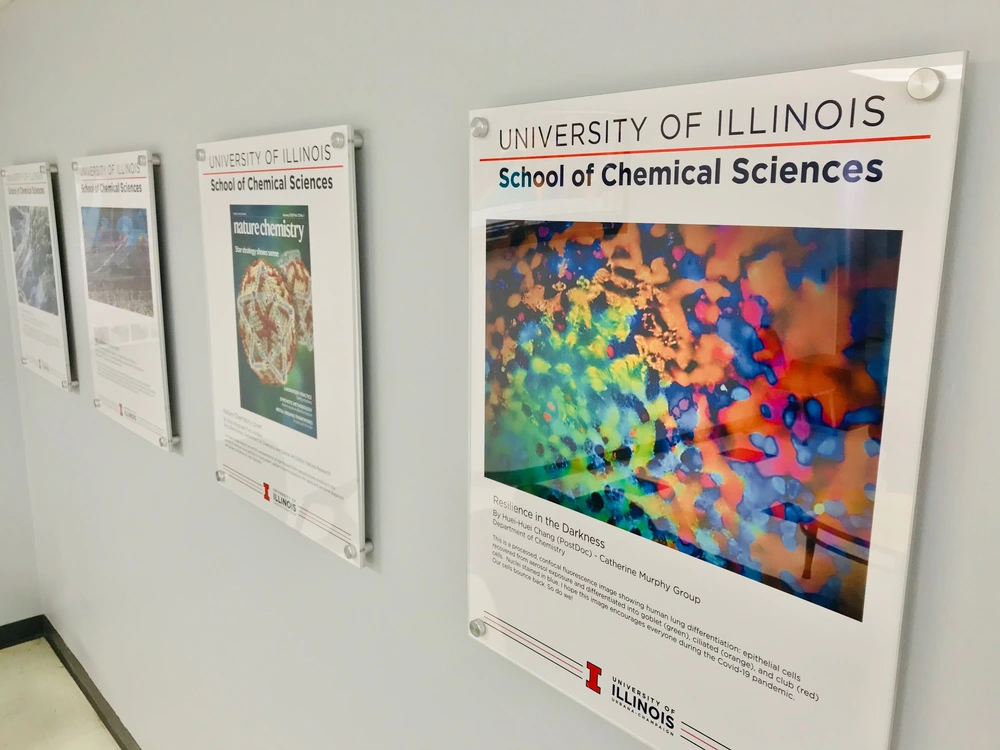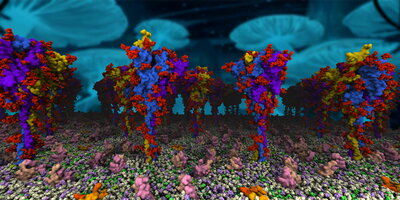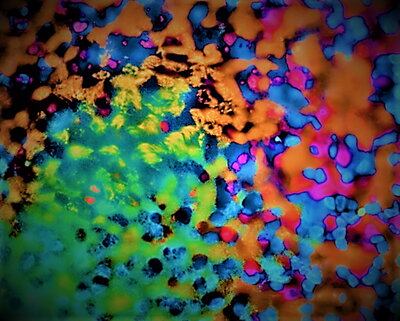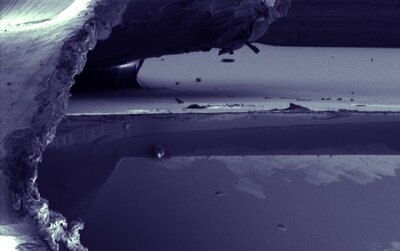
Several images submitted by researchers in the Department of Chemistry are among the winners and finalists in the 2020 Science Image Challenge sponsored by the School of Chemical Sciences.
This year's winner in the Main Category was graduate student Tianle Chen in the lab of Emad Tajkhorshid, an affiliate faculty member in chemistry and faculty member in the Center for Biophysics & Quantitative Biology.
An exhibit at the University of Illinois Willard Airport in Savoy showcases the images of winners and finalists in the 2020 SCS Science Image Challenge. The display is located on the second floor lounge at the airport and is updated annually with winners from this annual challenge. An exhibit in Noyes Lab displays images from previous science image challenges.
SCS annually invites researchers to participate by submitting a computer-assisted or traditional scientific image designed to inform, educate and inspire. Each entrant's Principal Investigator must be a faculty member or an affiliate/adjunct of the Department of Chemistry or Department of Chemical & Biomolecular Engineering. Below are the winners and finalists from the Department of Chemistry. Go to the SCS Science Image Challenge gallery to see all the winners and finalists for 2020.
2020 SCS SCIENCE IMAGE CHALLENGE RESULTS
Main Category Winner

Title: Fatal Coronavirus Spike Forest
By graduate student Tianle Chen (Tajkhorshid Lab), Chemistry and Center for Biophysics
& Quantitative Biology.
Main Category Finalists

Title: Resilience in the Darkness
By chemistry post-doctoral researcher Huei-Huei Chang (Murphy Lab).

Title: Apocalypse within serenity
By chemistry graduate student Aastha Sharma (Vura-Weis Lab).

Title: Nanodiamond
By chemistry graduate student Yiming Wang (Lu Lab).
The two other finalists in the Main Category were Mathew Chan with the Shukla Lab in Chemical & Biomolecular Engineering
and Azzaya Khasbaatar with the Diao Lab in Chemical & Biomolecular Engineering.
Cover Art Category Winner

Title: Star strategy shows sense
By Professor Xing Wang, Department of Chemistry (Wang Labs), and Tulsi Voralia,
senior art editor for Nature Research.